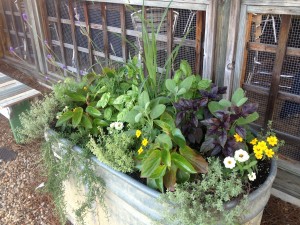
for summer – lots of herbs and some flowers too…
Herbs are beautiful additions to any container garden, either on their own or combined with seasonal flowers. They add colorful leaves, texture, scent, and culinary usefulness to plantings and attract bees and other beneficial insects as well.
Planting Basics:
Use as large a pot as possible.
Use good quality potting soil.
Fertilize lightly.
Maintenance of Herbs in Containers:
Herbs often suffer from overfertilizing, overwatering, and overcrowding. Water when dry so that water runs out the bottom of the container. Remember pots will dry out quickly in the heat of summer and during windy conditions. Empty water that may be standing in saucers. Clip your herbs regularly. This will keep them from becoming leggy and overcrowded, especially if they’ve been used in combination plantings. Harvest herbs in the morning and just prior to bloom. Near the end of the season, allow your basil to bloom; the bees love it! Finally, never prune woody herbs like rosemary to bare wood.
Using Herbs in Combination Plantings:
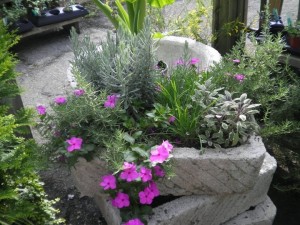
Trailing pink vinca works well with sun loving herbs of lavender, sage and chives in this trough planting….
Start with the herbs you’d like to most use, either for an ornamental or culinary addition. Knowing their growth habits is helpful in deciding their placement in your container.
For example, use chives for a grasslike effect; thyme, trailing rosemary, and oregano to spill over the edges; lavender or upright rosemary for height; and parsley and sage as fillers in containers.
Another idea is to use one herb in a pot and group many such pots together. A rosemary plant, once mature, will easily fill a large 14″ or bigger planter, as will lavender. Mid-size (10″- 14″) pots can be filled with parsley, chives, sage, French tarragon, or, more easily grown in the south, Texas tarragon. The larger the pot the better!
Annual Herbs Basil, Lemon Verbena, Lemon Grass (warm season); Cilantro, Dill (cool season); parsley (biennial).
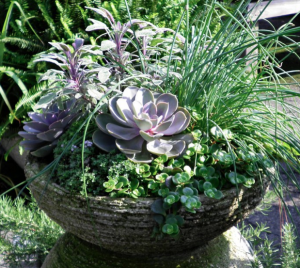
Herbs and Succulents…
Perennial Herbs Rosemary, Oregano, Marjoram, Thyme, Sage, Chives, Mint, Lavender, French Tarragon, Texas Tarragon, Savory, Hyssop, Lemon Balm, Catnip, Rue, Santolina, Fennel, Germander, Summer and Winter Savory.
Cool Season Herbs Cilantro, Dill, Salad Burnet, Chervil.
Plant Sizes
Small – under 1 foot in diameter: Parsley, Dill, Chives (garlic & onion), Cilantro, Salad Burnet, Chervil.
Medium – 1-2 feet in diameter: Thyme, Tarragon, Basils, Mint.
Large 3 feet or more in diameter or over 4 feet high: Rosemary, Oregano, Lemon Verbena, Sage.
Sun/Moisture
Dry, sunny, Mediterranean conditions: Rosemary, Oregano, Marjoram, Sage, Lavender, Thyme, Tarragon, Germander, Santolina.
Cooler, afternoon-shaded locations: Mint, Cilantro, Dill, Chives, Parsley, Lemon Balm, Salad Burnet, Lemon Grass.
Common methods of propagation of perennial herbs: Divisions: Chives, Mint, Thyme, Oregano. Cuttings: Rosemary, Lavender, Sage, Winter Savory, Lemon Verbena, Rue.
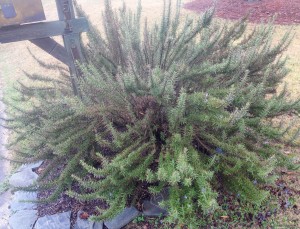
Rosemary looking a little rough after this past winter…
Pests & Diseases Of Herbs Careful cultivation of your herbs will help keep them healthy and less susceptible to pests and diseases. Provide adequate water when needed, plant with the proper spacing for the best air circulation, and place them in the right amount of sun. Chemicals, obviously should not be used on any herbs you plan to harvest. Insecticidal soap or a strong spray of water is generally enough to deter most pests.
Aphids – Soft-bodied insects found on new growth and easily controlled by a strong spray of water or insecticidal soap.
Whiteflies Can be problematic, spraying the undersides of the leaves consistently with insecticidal soap is necessary to eliminate them. In large infestations they’ll fly out of the center of the plant in a white cloud when disturbed. An important point to keep in mind is that spraying with the wrong insecticide can make whitefly problems worse, since spraying with the wrong insecticide will kill important predatory insects and tiny parasitic wasps that help control whiteflies. These naturally occurring beneficial insects are the best way to control whiteflies, and whitefly outbreaks generally occur when this natural control is disrupted. The best course of action is to preserve beneficials by avoiding unnecessary insecticidal treatments.
Look HERE for more information from Mississippi State University.
Leaf Hoppers – These insects hop from plant to plant so are known to spread diseases. Control with insecticidal soap spray. Remove any garden debris each fall to reduce over-wintering sites. Thorough coverage of both upper and lower infested leaves is necessary for effective control.
Leaf Miner – Burrowing insects that live inside leaves and are identified by the white “trails” on the leaves. The best control is to cut the plant back and throw away (Do not compost.) those leaves. Common on parsley in particular.
Caterpillars – Always try to identify caterpillars before you get rid of them! Swallowtail butterfly caterpillars are commonly found on parsley, fennel, and dill. Bt and Sevin dust will control those you do want to eliminate, as will hand picking.
Powdery Mildew – Mildew is caused by too little air circulation. Thinning the plant and clipping back surrounding plants to improve air movement will help.
The following organic fungicide of baking soda and water can also be applied on your herbs:
1 Tbsp baking soda. ½ Tsp liquid soap 1 Tbsp light horticultural oil in 1 gallon of water.
Always spray in the coolest portion of the day, avoid spraying when bees are active, and test this on a small portion of the plant first. The oil coats and smothers the fungi, and the soap helps the mix cling to the upper and lower portions of the leaf.
Latin names for herbs listed in this post:
Anise Hyssop: Agastache foeniculum; Basil: Ocimum basilicum; Chives: Allium schoenoprasum; Garlic chives: Allium tuberosum; Cilantro: Coriandrum sativum; Dill: Anethum graveolens; Fennel: Foeniculum vulgare; Germander: Teucrium chamaedrys; Lavender: Lavandula sp.; Santolina: Santolina chamaecyparissus, Santolina virens; Lemon Balm: Melissa officianalis; Lemon Grass: Cymbopogon citratus; Lemon Verbena: Aloysia triphylla ; Marjoram: Origanum majorana; Mint: Mentha sp.; Oregano (Greek) Origanum heracleoticum; Parsley: Petroselinum crispum; Rosemary: Rosmarinus officianalis; Rue: Ruta graveolens; Sage: Salvia officianalis; Salad Burnet: Sanguisorba minor; French tarragon: Artemesia dracunculus; Texas tarragon: Tagetes lucida; Thyme: Thymus sp. Winter Savory: Satureja Montana; Summer Savory: Satureja hortensis
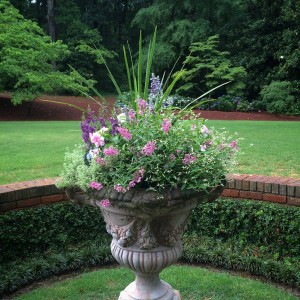 Spring is for planting in the garden and in pots. Flowers, herbs, perennials, shrubs, and vegetables are all players in the annual game of “What will grow in this spot?” or “What can I plant in this pot?”.
Spring is for planting in the garden and in pots. Flowers, herbs, perennials, shrubs, and vegetables are all players in the annual game of “What will grow in this spot?” or “What can I plant in this pot?”.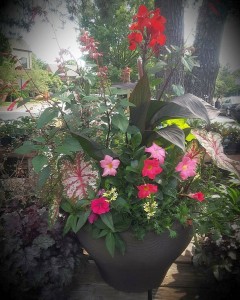
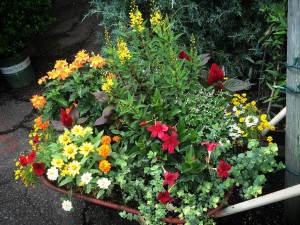 Many of them come to see the planters we’ve put together, getting ideas for extra pots or to make note of a different combination of plants they might not have thought of.
Many of them come to see the planters we’ve put together, getting ideas for extra pots or to make note of a different combination of plants they might not have thought of.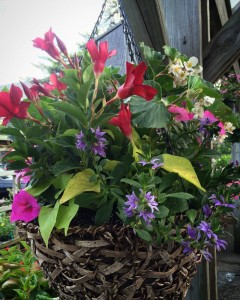
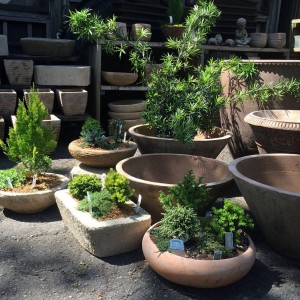

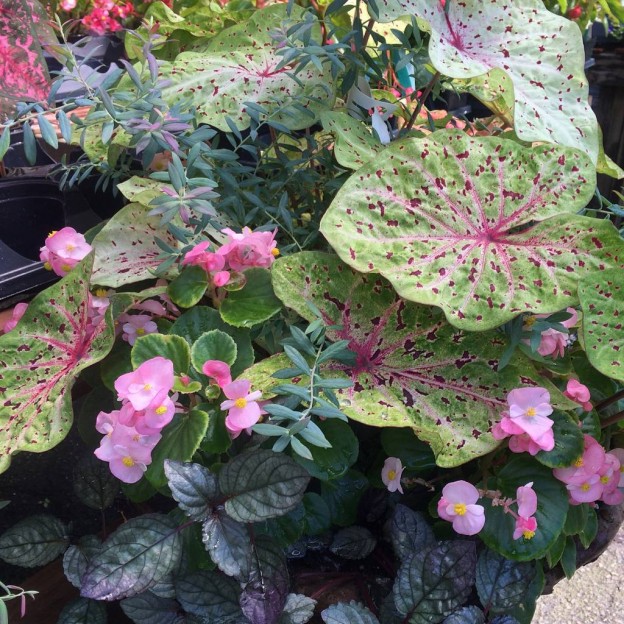
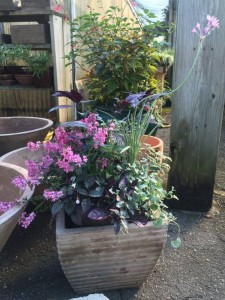
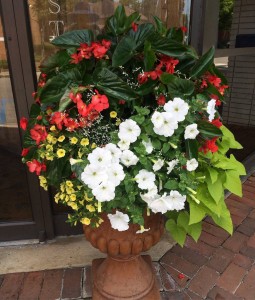
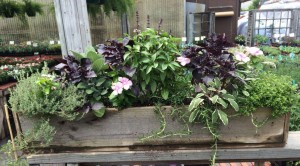
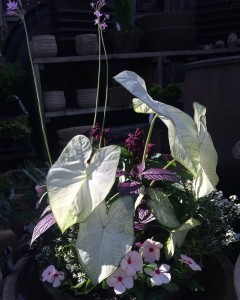
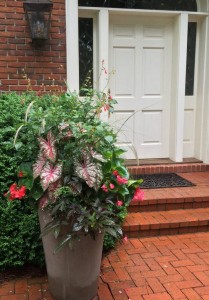
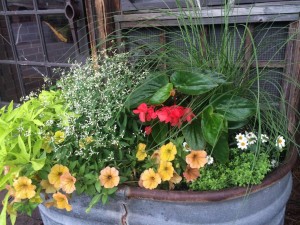
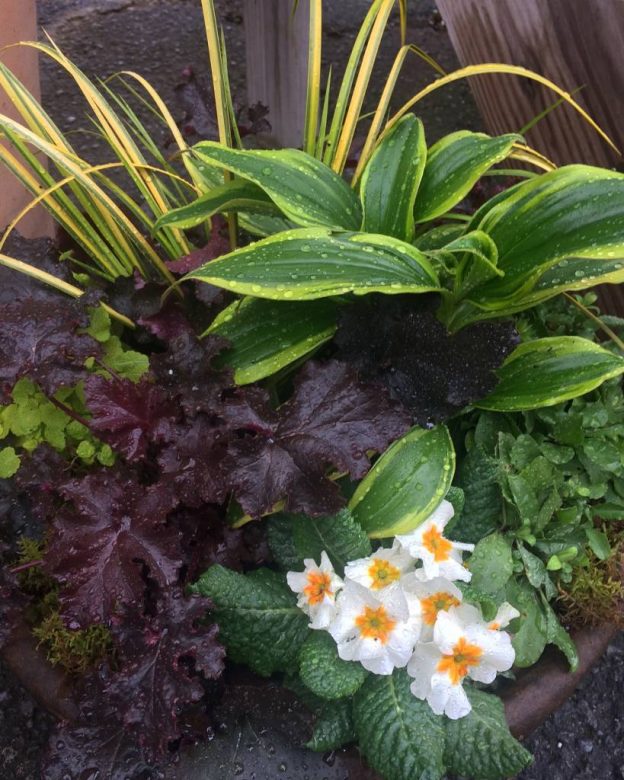
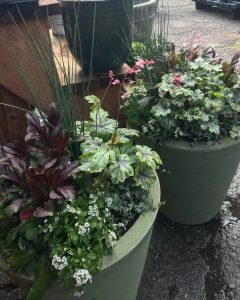
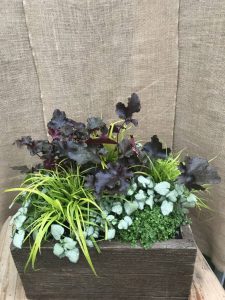
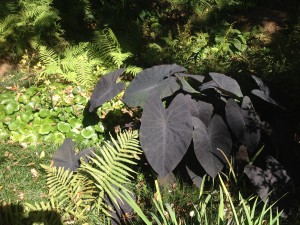

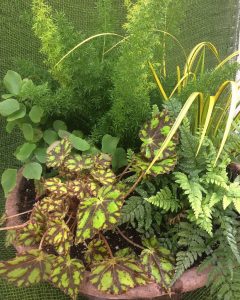
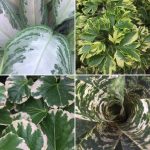
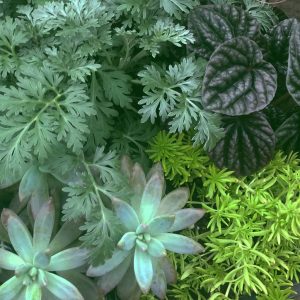
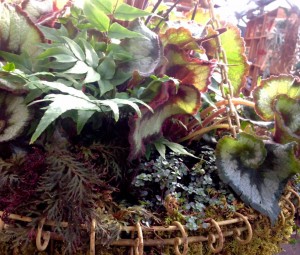

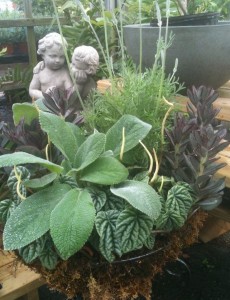
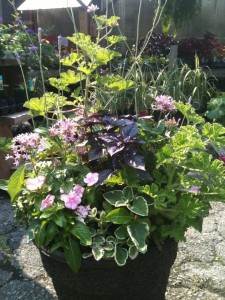
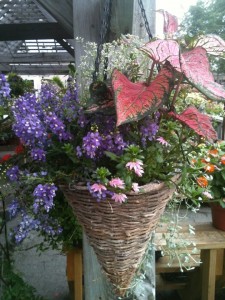
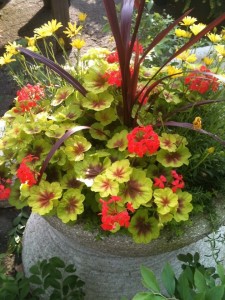
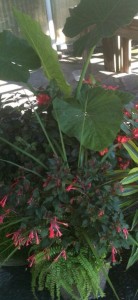
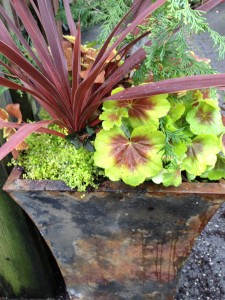
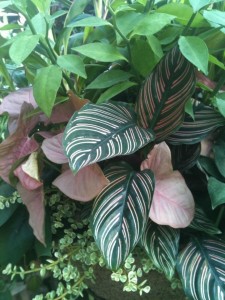
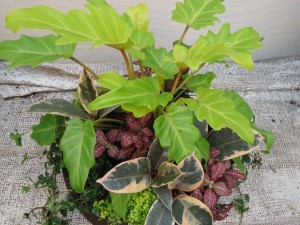
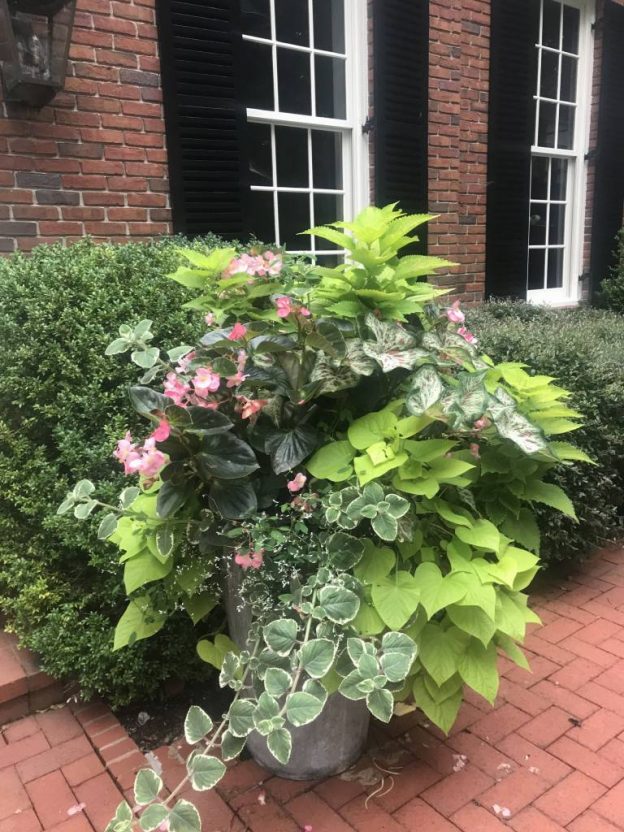
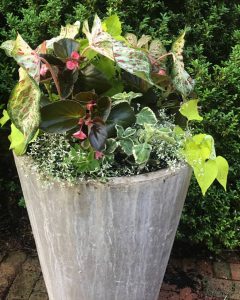

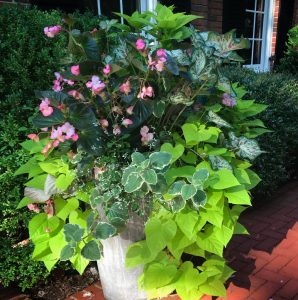

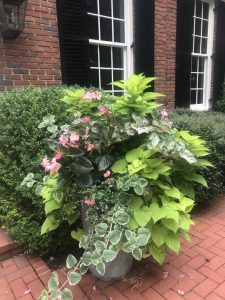
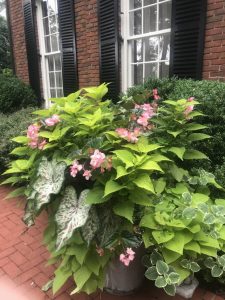
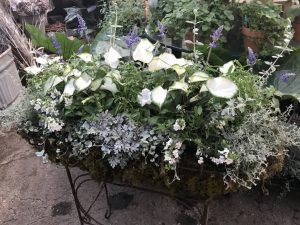
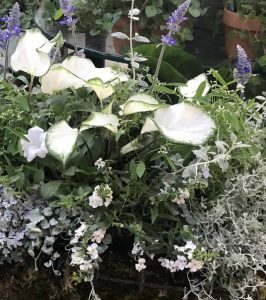
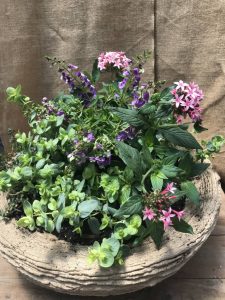
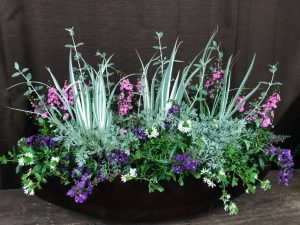
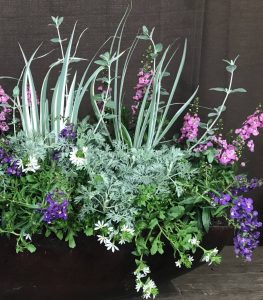
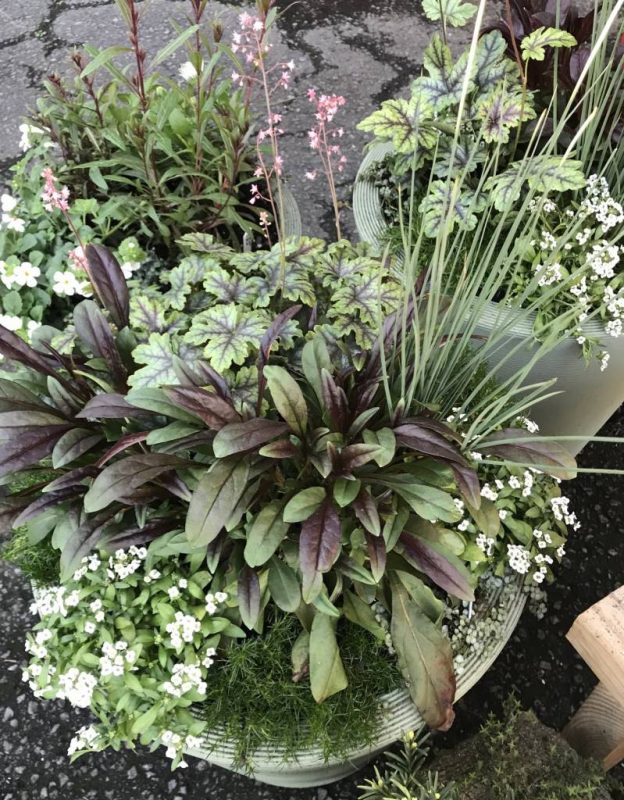
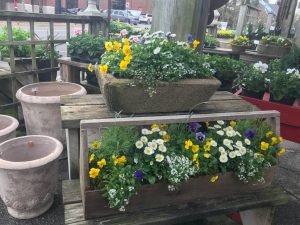
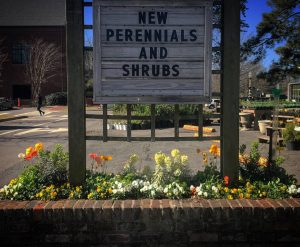
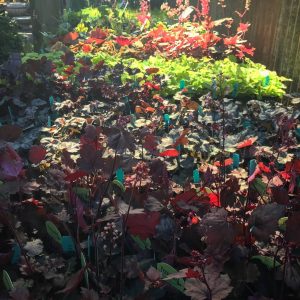
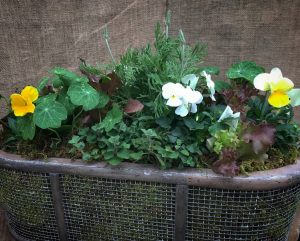
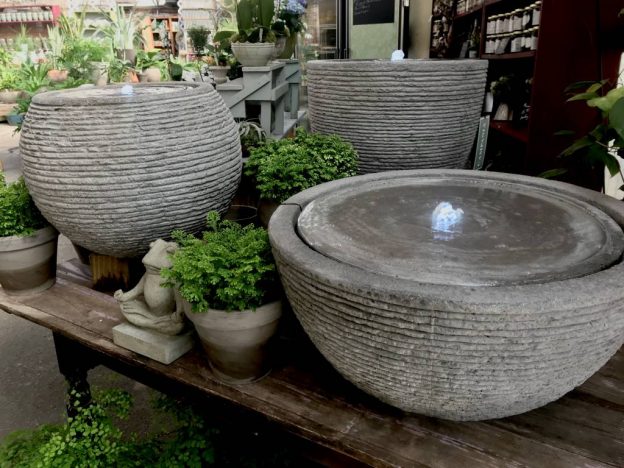
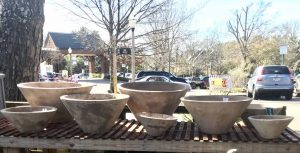
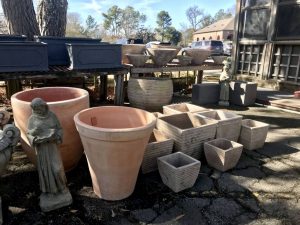
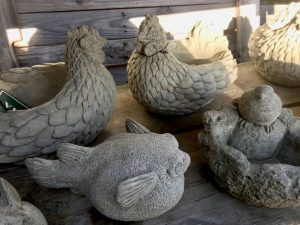

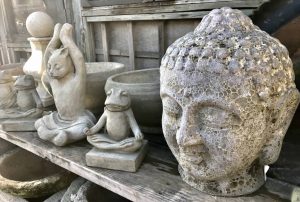
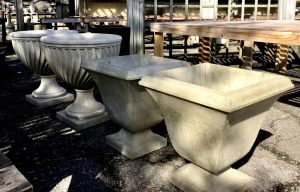
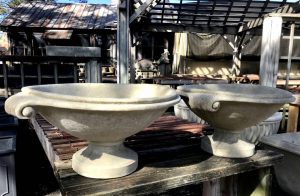
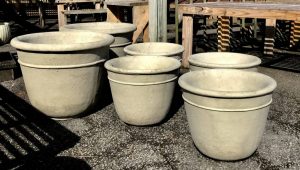
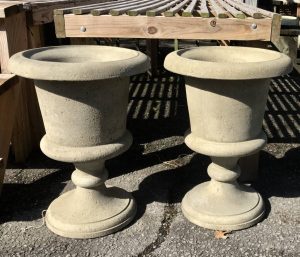
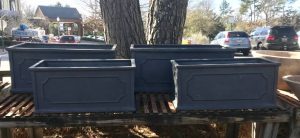
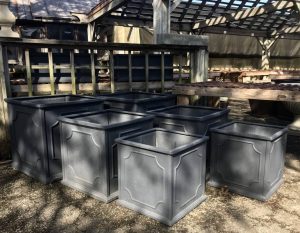
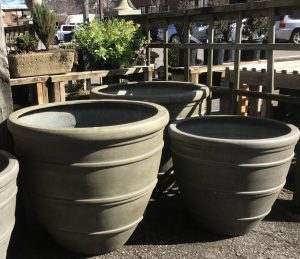
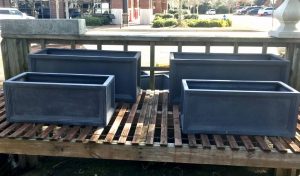
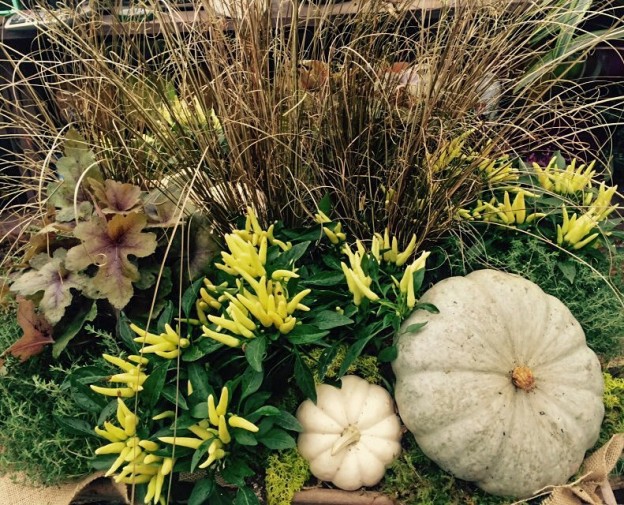

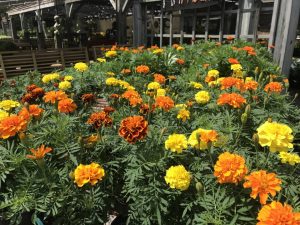
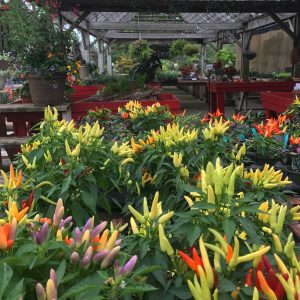
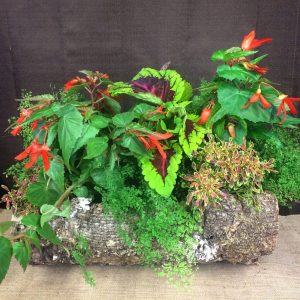
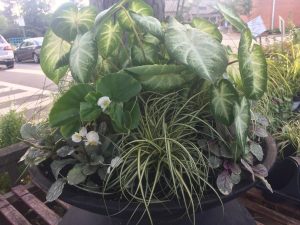
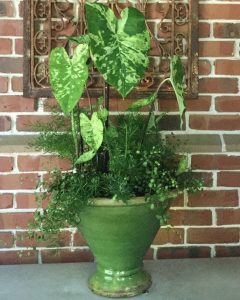
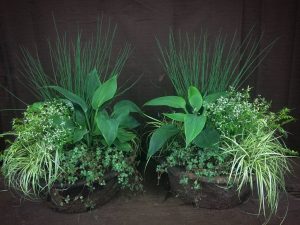
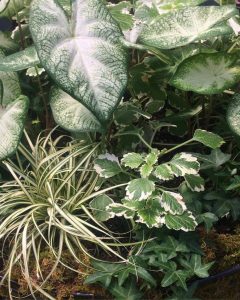
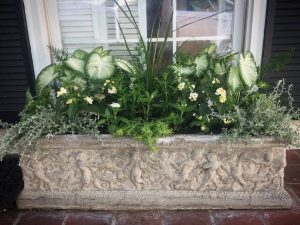
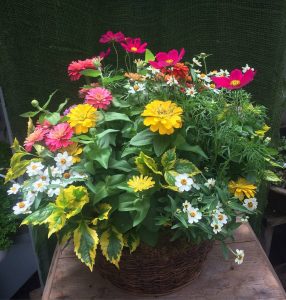
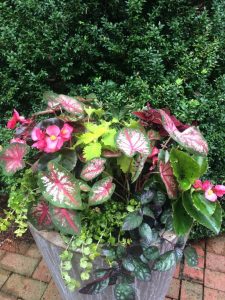
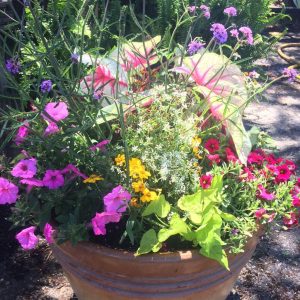
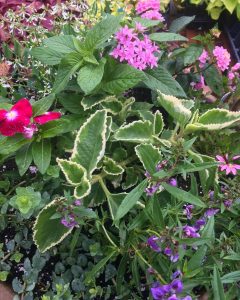
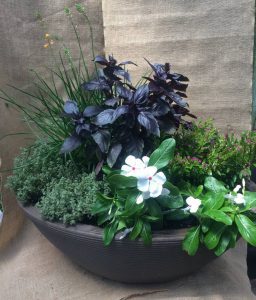
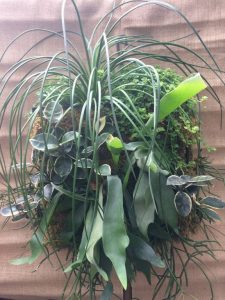
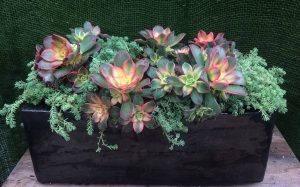
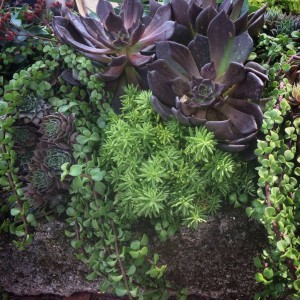
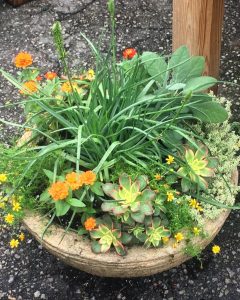
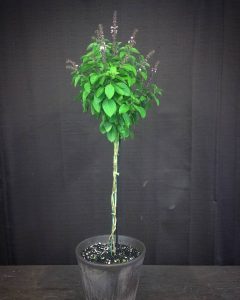
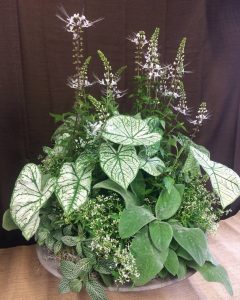
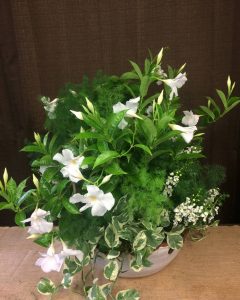
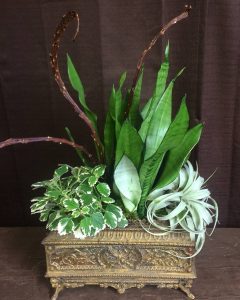
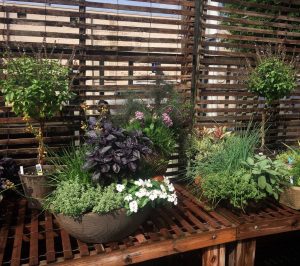
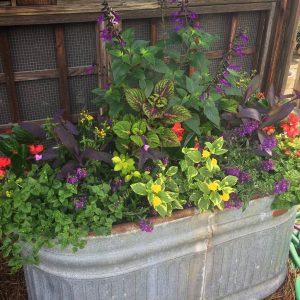
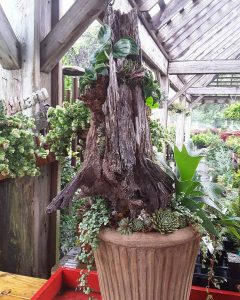

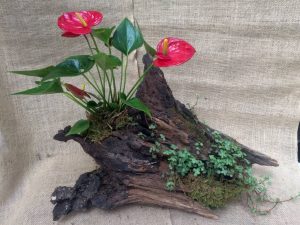
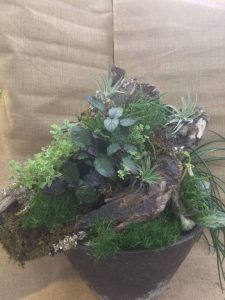
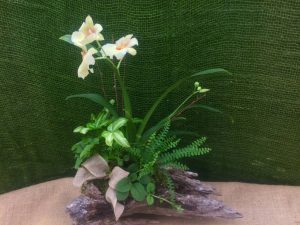
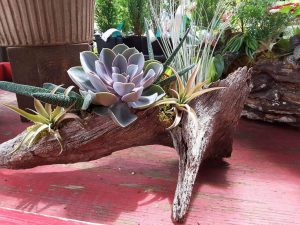
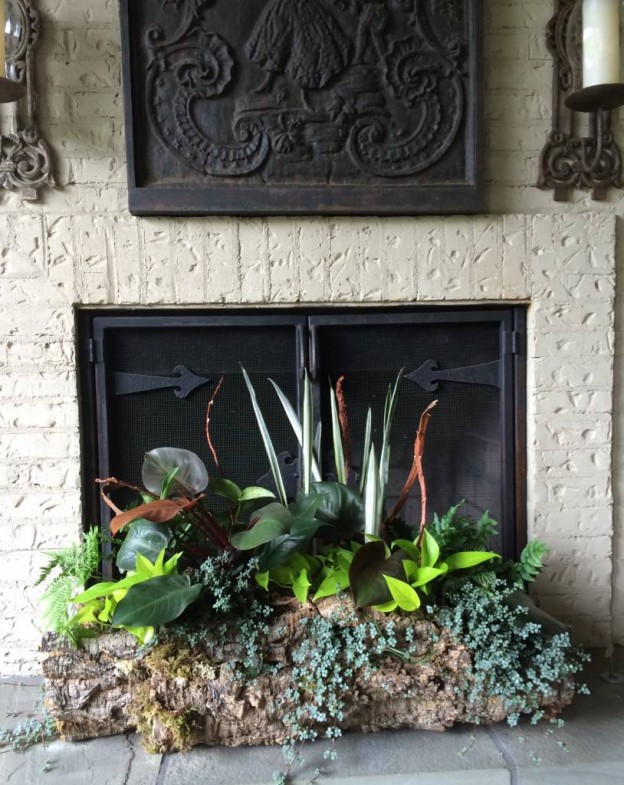
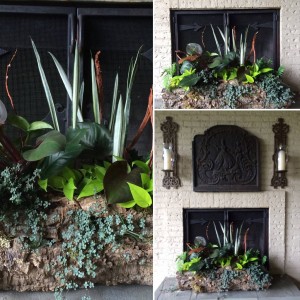
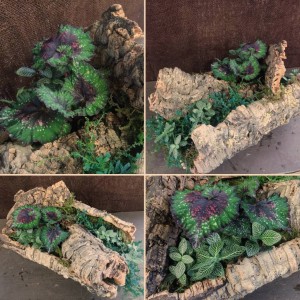
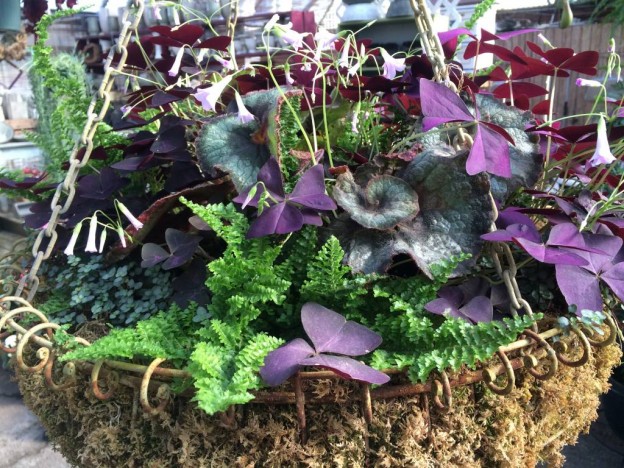

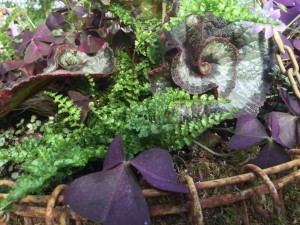
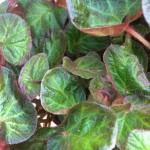
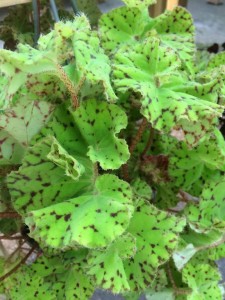
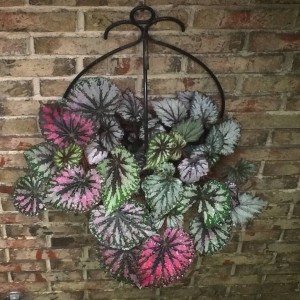
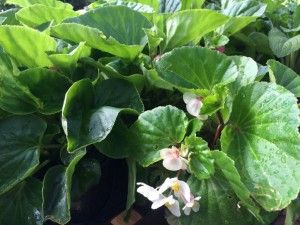
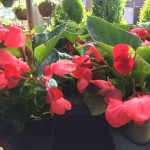
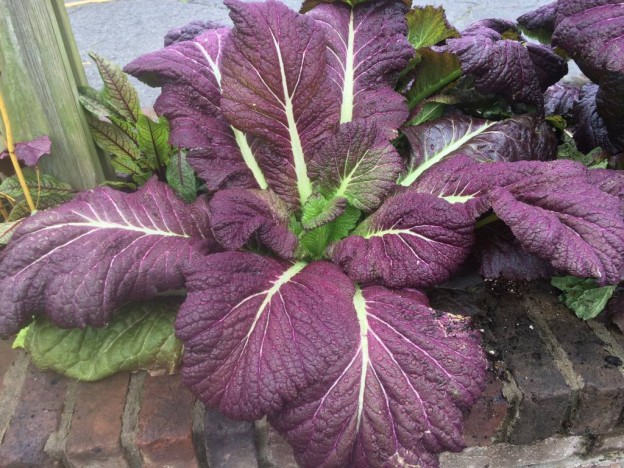
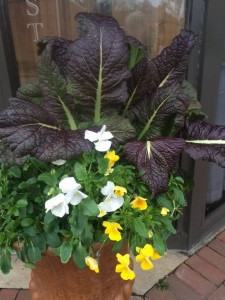
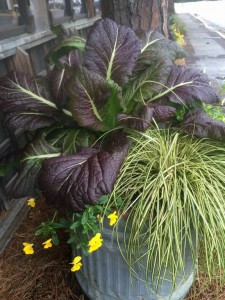
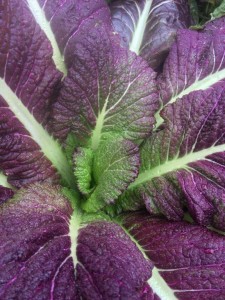
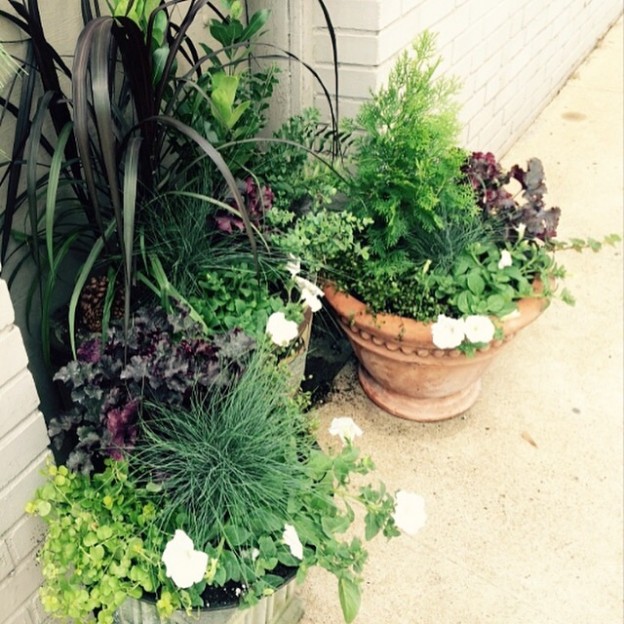
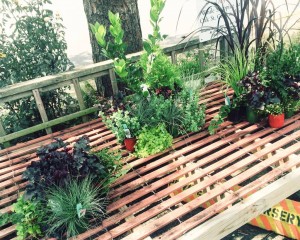
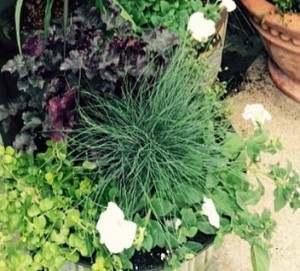
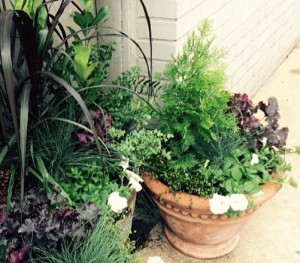
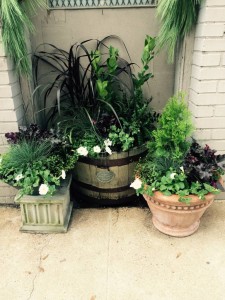
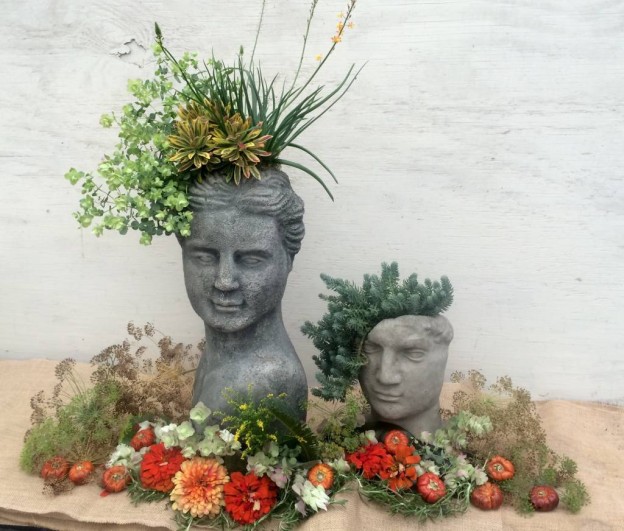
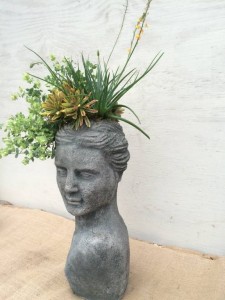

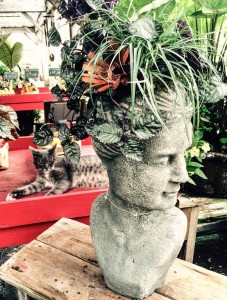
 The troughs in front of Dyron’s Restaurant took a real hit this winter, so I was more than happy to pull out all that had died and replant for the summer.
The troughs in front of Dyron’s Restaurant took a real hit this winter, so I was more than happy to pull out all that had died and replant for the summer.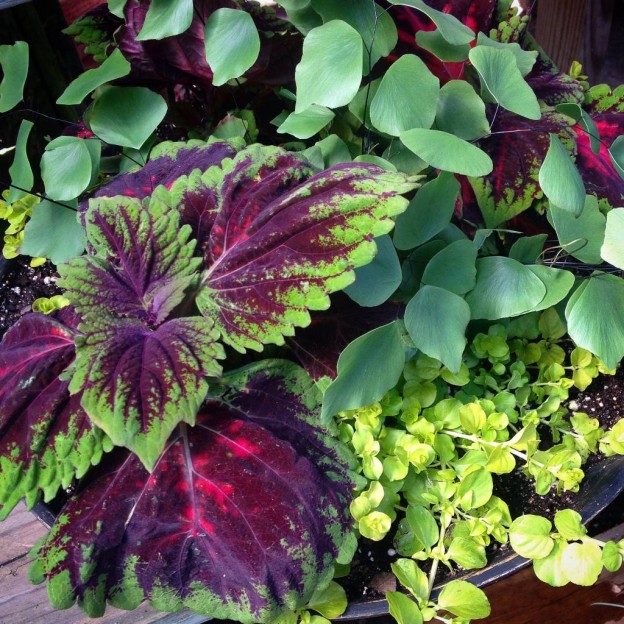
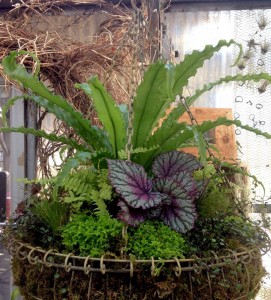
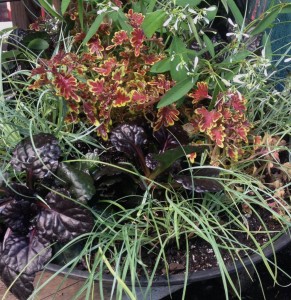
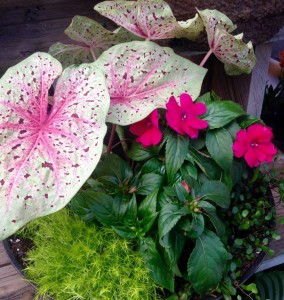
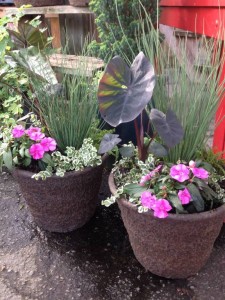
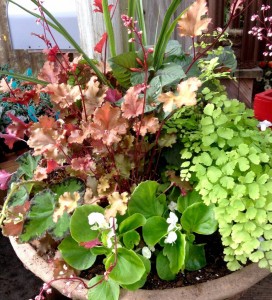
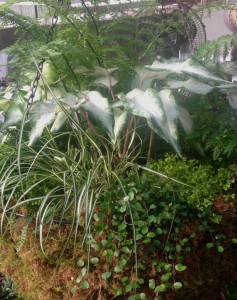
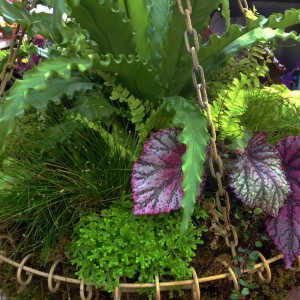
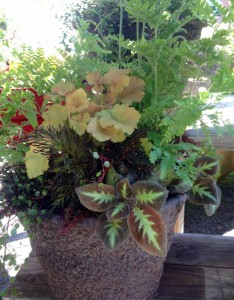
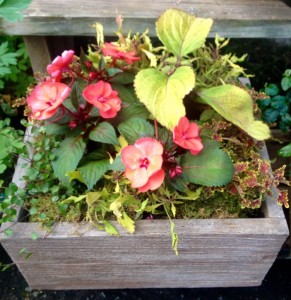
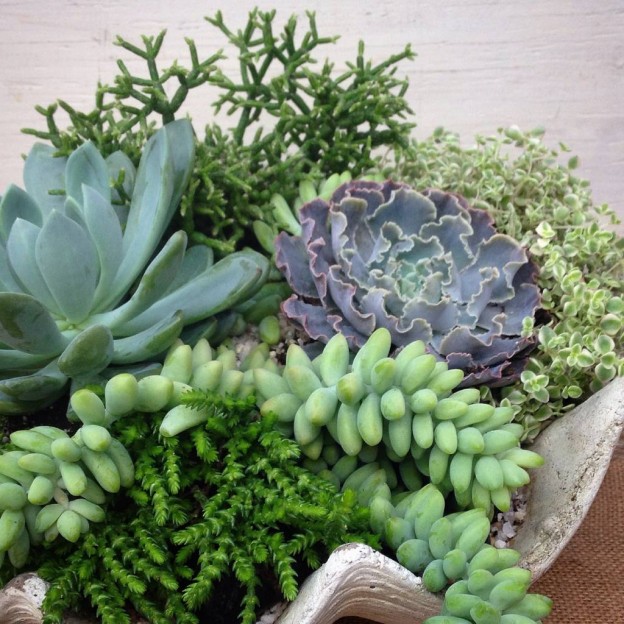
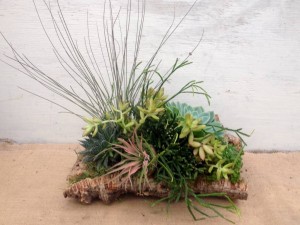
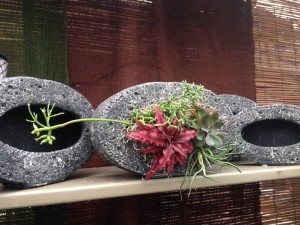
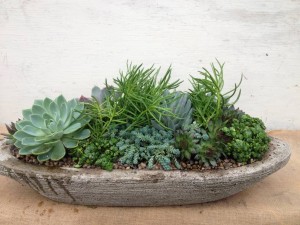
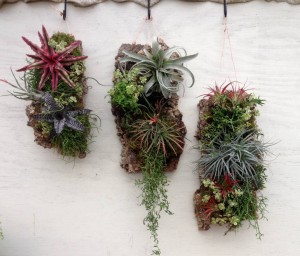
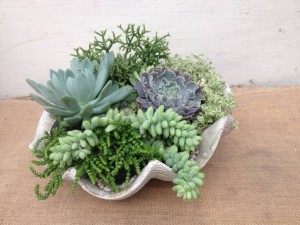
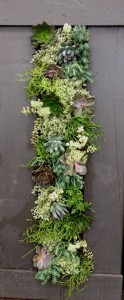
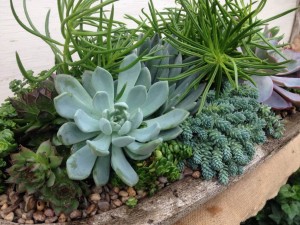 Hen and chicks (Sempervivum species) is extremely cold hardy and will breeze through the winter if they’re not waterlogged. Soggy, cold soil is definitely not to their liking!
Hen and chicks (Sempervivum species) is extremely cold hardy and will breeze through the winter if they’re not waterlogged. Soggy, cold soil is definitely not to their liking!
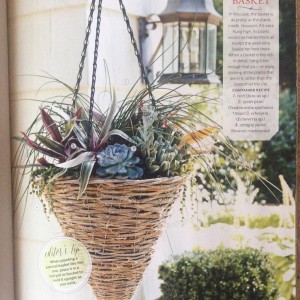
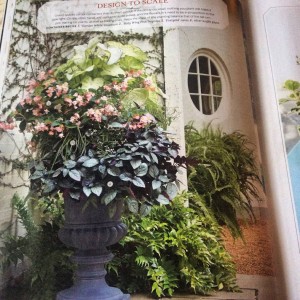
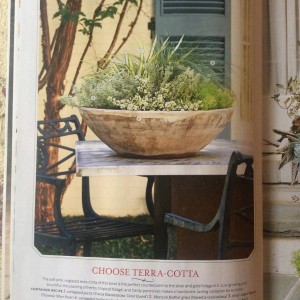
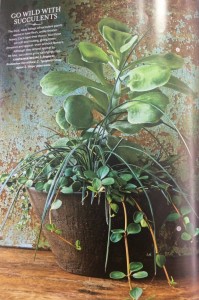
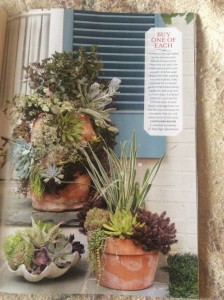
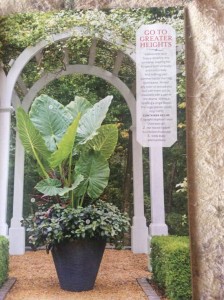
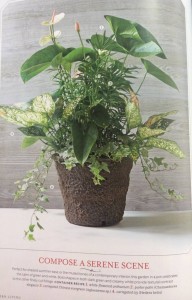
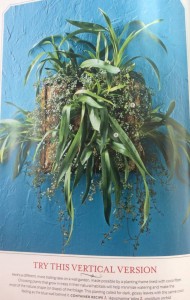
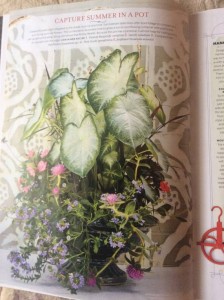
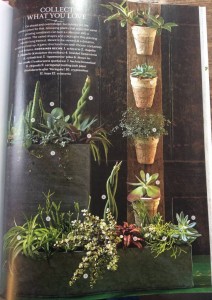
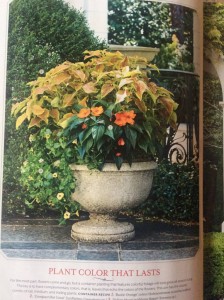
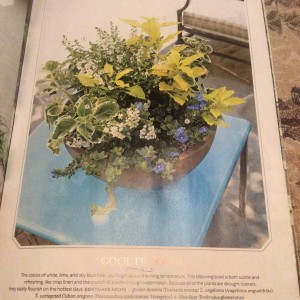
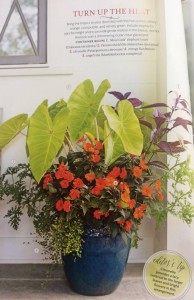
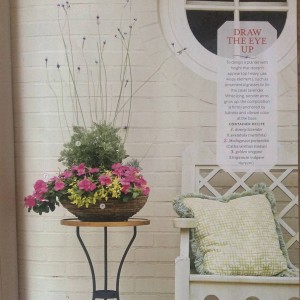
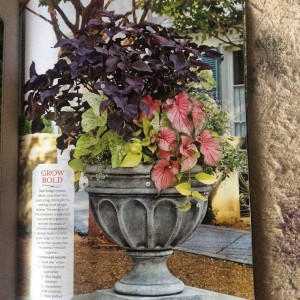
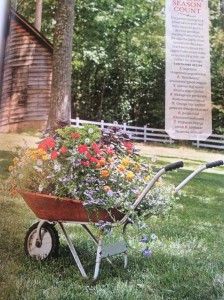

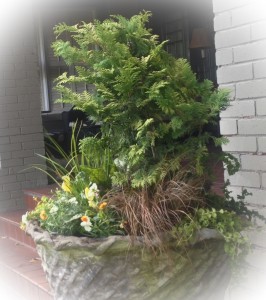 The temperatures are hopefully trending downward, and you’re thinking about redoing your summer plantings. There seem to be so many choices; it’s normal to feel overwhelmed at the garden shop, even though you probably thought you had it all figured out before you left home!
The temperatures are hopefully trending downward, and you’re thinking about redoing your summer plantings. There seem to be so many choices; it’s normal to feel overwhelmed at the garden shop, even though you probably thought you had it all figured out before you left home!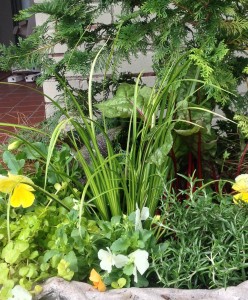 The large planter here is one of a pair, used at the top of stairs leading onto a wide open porch. I took my color cues from the red brick and cream color of the house in choosing my plants, using predominantly yellow with the evergreen Chamaecyparis ‘Crippsii’, yellow variegated Acorus ‘Ogon’, golden creeping Jenny to trail, and Matrix ‘Lemon’ pansies. To this I added ornamental red mustard, and a chard with red stems called ‘Charlotte’. These will add big, bold leaves, beautiful foliage color, and added height.
The large planter here is one of a pair, used at the top of stairs leading onto a wide open porch. I took my color cues from the red brick and cream color of the house in choosing my plants, using predominantly yellow with the evergreen Chamaecyparis ‘Crippsii’, yellow variegated Acorus ‘Ogon’, golden creeping Jenny to trail, and Matrix ‘Lemon’ pansies. To this I added ornamental red mustard, and a chard with red stems called ‘Charlotte’. These will add big, bold leaves, beautiful foliage color, and added height.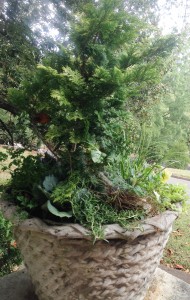 These planters are quite large and can support this variety of plants. In smaller planters, a smaller shrub, some curly parsley, pansies and a trailing plant might be sufficient. Remember, more is always better in planters and windowboxes to give them a lush overflowing feel.These planters will make a definite statement as they grow out.
These planters are quite large and can support this variety of plants. In smaller planters, a smaller shrub, some curly parsley, pansies and a trailing plant might be sufficient. Remember, more is always better in planters and windowboxes to give them a lush overflowing feel.These planters will make a definite statement as they grow out.

